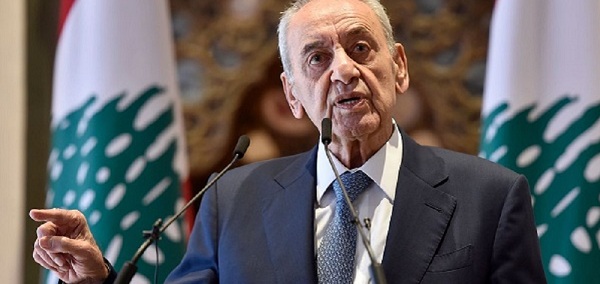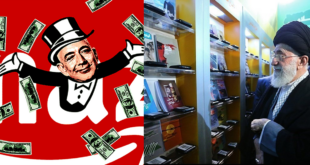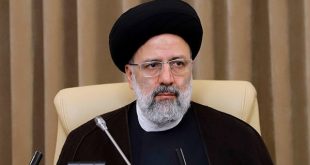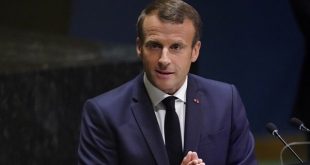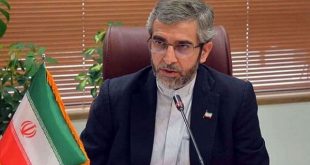Alwaght– While only several days have passed since Lebanon agreed to hold indirect talks with the Israeli side on sea borders, political sources in Beirut have told Lebanese Al Akhbar newspaper that Lebanon is strongly opposed to the appointment of Energy Minister Yuval Steinitz as the head of the Israeli negotiation delegation and that the Israeli insistence on his representation of Tel Aviv can push the talks to collapse even before their start.
According to an announced plan by David Schenker, the US assistant secretary for near eastern affairs and envoy to the dispute, the talks will start in mid-October and will be held in a United Nations headquarters in the Lebanese town of Naqura, bordering the occupied territories. According to the Lebanese media, Lebanon’s negotiating delegation will be led by some army generals and participation of experts on borders and international law.
The dispute in “exclusive economic zone”
Lebanon and the Israeli regime have no agreed-upon ground borders and they remain relying on a ceasefire pact, Blue Line, brokered by the United Nations after the Israeli withdrawal from southern Lebanon in 2000, following decades of occupation. This state of uncertainty in the demarcation of the borders is also in the sea and even influenced it.
In 2007, the Lebanon government reached an agreement with the Cyprus government for maritime border drawing which in the UN Convention on the Law of the Sea is dubbed “exclusive economic zone.” The deal was refused by the Lebanese council of ministers due to its “ambiguities.”
In April 2009, a committee of ministers marked all the coordinates of the EEZ of Lebanon based on the determined points in the agreement and added northern points (from number 7 to 17) and southern points from (from number 18 to 25). The point 23 marks the coordinates of the southwestern border of the EEZ and seems to be overlapping with Cyprus and Israeli regime zones.
In 2011, the Israeli regime formally drew its own EEZ, with the coordinates overlapping with the coordinates of the southern border of the Lebanese zone. The southwestern border of the Lebanese zone is 17 kilometers lower than the point the Israelis marked as the northwestern border of their EEZ. So, this 850 kilometers of overlap creates a triangle that both claim to be part of their zones. The core cause of the dispute is this tingle, a dispute that bears an outlook of aggravation as both sides have their ambitions to prospectively produce energy from their offshore energy fields.
The Naqura land demarcation point, which is dubbed B1 point, is the most important source of dispute in the maps that bears great importance in drawing the direction of the sea borders and hence the borders of the EEZs. B1 was the point in Naqura that the Israeli army was stationed during the occupation of southern Lebanon. The Lebanese army was positioned in this region in 2018. Settling this simple but stubborn dispute would mean determining about 17 kilometers of the EEZ offshore.
Sea border negotiations importance from Lebanon
The Lebanese have been seeking to produce energy from their EEZ for years but the Israeli greed and expansionist ambitions and also their home differences have so far pushed them away from their goal. Lebanon’s grappling with home problems in recent years allowed the Israeli side to increase its offshore-based energy independence and sign energy pacts with Jordan and Egypt worth billions of dollars.
Since last year and particularly after Lebanon became a scene for protests against deteriorating economic conditions that caused a huge political crisis in the country, the Lebanese leaders grew hopeful that using the sea oil and gas energy reserves can save their economy that is teetering on the edge of collapse. Nabih Berri, Lebanese parliament speaker Nabih Berri, said that settling the dispute and producing gas from near the disputed area can “help us pay our debts.”
Lebanon, one of the world’s most indebted countries, defaulted on a $1.2 billion payment in March. This was the first time the country failed to meet its debt payment commitment made to the international creditors.
Amid the unfolding economic crisis, Lebanon’s currency, lira, has so far lost over 80 percent of its value against the US dollar, nearly draining away the nation’s hard currency reserves. The country’s banking sector has almost collapsed and depositors have no access to their dollar accounts. The debt-to-GDP ratio now is 170 percent, one of the highest in the world. Predictions suggest that the national economy would be 12 percent smaller in the current year, while over half of the national budget is spent to pay off the debt. While 50 percent of the Lebanese were under the poverty line before the coronavirus pandemic, after the outbreak this rate reached 75 percent.
Since 2009, a number of gas fields have been discovered in the Eastern Mediterranean by other countries. In December 2018, Lebanon went into contract with a consortium of Italian and French energy companies to explore for gas in two sea blocks starting from the northern shores of Beirut. One of these blocks, Block 9, covers waters disputed with Israeli regime. According to the contract, the exploration had to start in 2020, but so far, the dispute blocked the drilling operations.
US biased role in the dispute
The US government, in recent years imposing economic and psychological pressures on Lebanese companies, banks, and political leaders for final strains on Hezbollah for its disarmament, has been pressing Beirut into border negotiations with Tel Aviv. Amid these pressures, the Israelis moved fast with their energy exploration operations in the disputed areas, drawing Lebanese protests and bearing witness to the fact that Washington is far from a neutral mediator.
In 2012, the US mediator Fredrick Hof proposed division of 860 square kilometers of the disputed waters between the two sides but neither accepted what was dubbed the “Hof Line.” In 2016, Amos Hochstein replaced Hof but his efforts went nowhere. The third mediator was David Satterfield, who after a single year of holding the post gave place to David Schenker.
Schenker made his first visit to Beirut as a mediator in September, meeting with Berri. He flew back home angry after a negative response from Beirut to his initiative, sanctioning Economy Minister Ali Hassan Khali and a top aide to Berri for their support to Hezbollah.
The US administration, offering massive supports to the Israeli interests in search of backing from Zionist lobbies in the US for Trump reelection, is pursuing other interests in this case. If it can broker an agreement, it can have a bigger role in Eastern Mediterranean energy cooperation while other actors like Russia and France are setting their eyes on this region. After all, there are increasing proofs of huge energy reserves in this region, especially off the coasts of Lebanon, Cyprus, and Israel.
American energy companies, like Noble Energy, are the main contractors of the Israeli gas and oil exploration operations. The US last month after four decades lifted arms sanctions on Cyprus that is in dispute with Turkey over gas explorations and has agreements with Lebanon and the Israeli regime in Eastern Mediterranean.
From another angle, by forming an energy hub in this region, the US at the end of the road can decrease Europe’s energy reliance on Russia which is Moscow’s strong tool for pressures on the West. Furthermore, the US is pressing Beirut and Tel Aviv towards direct negotiations on the border disputes to paint Lebanon as another Arab country poised to normalize ties with the Israelis thanks to the Trump administration’s efforts.
As the “deal of the century”, regarding the Palestinian cause, gave away the real nature of the US mediation and the support to the Israeli side against the Palestinians, this time the US cannot be an unbiased mediator and is putting all-out strains on Beirut in a bid to force the latter to make concessions to Tel Aviv in the sea border demarcation negotiations.
 WILAYAH NEWS VOICE OF THE GLOBAL AWAKENING
WILAYAH NEWS VOICE OF THE GLOBAL AWAKENING

